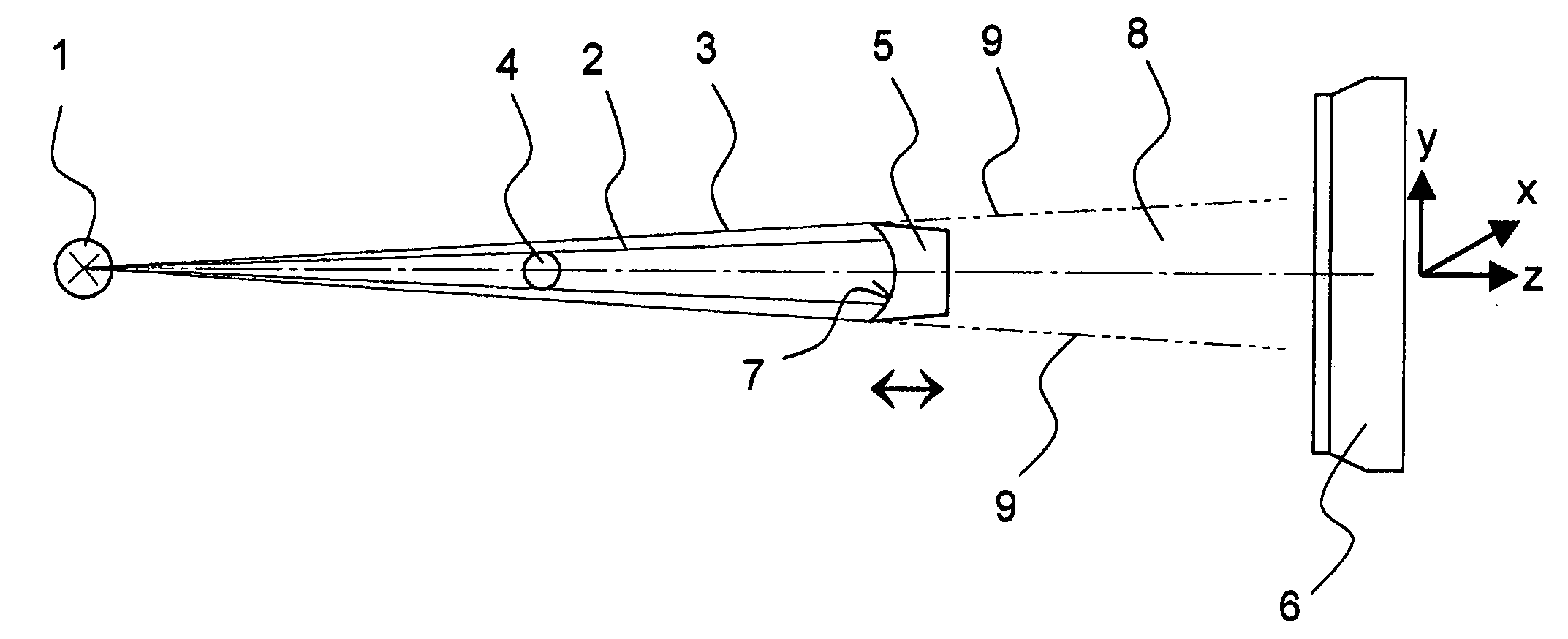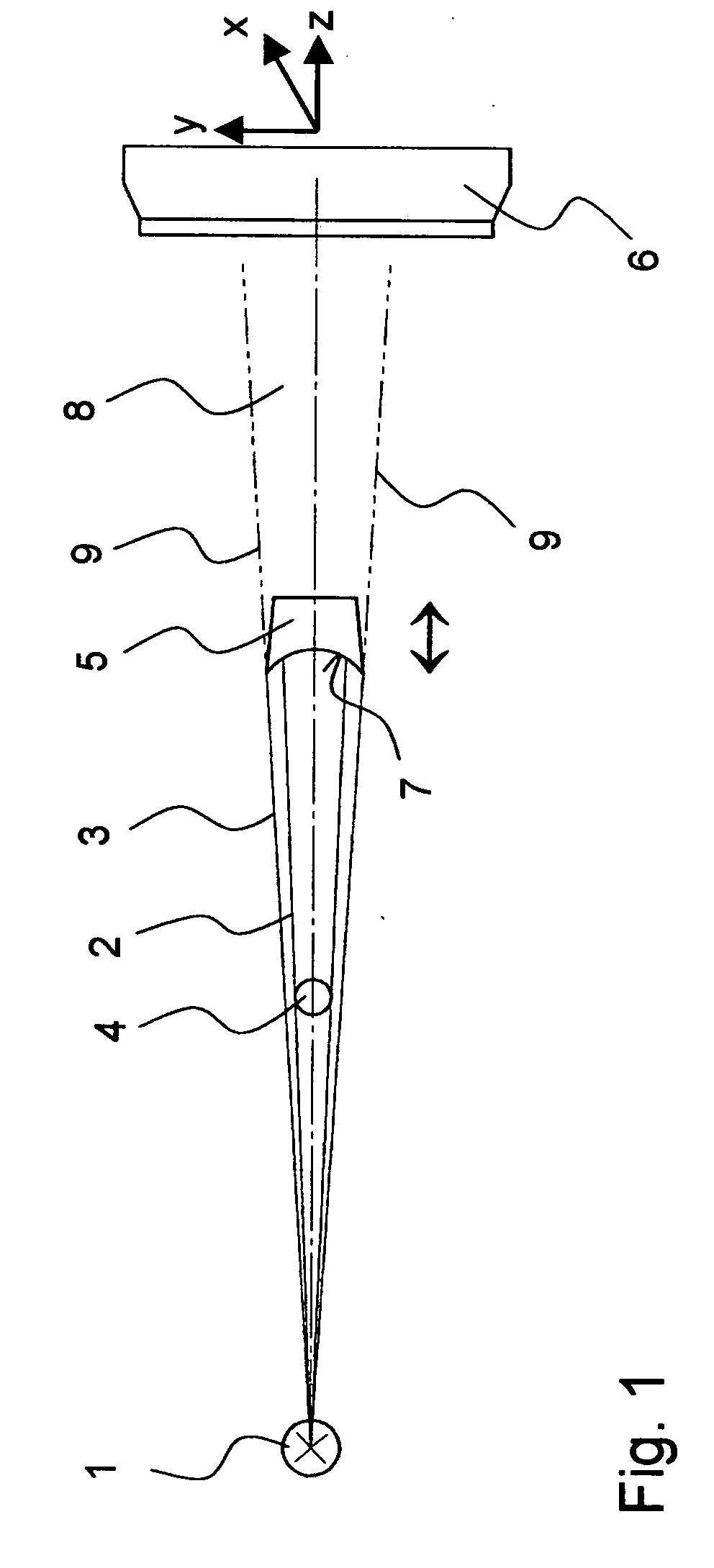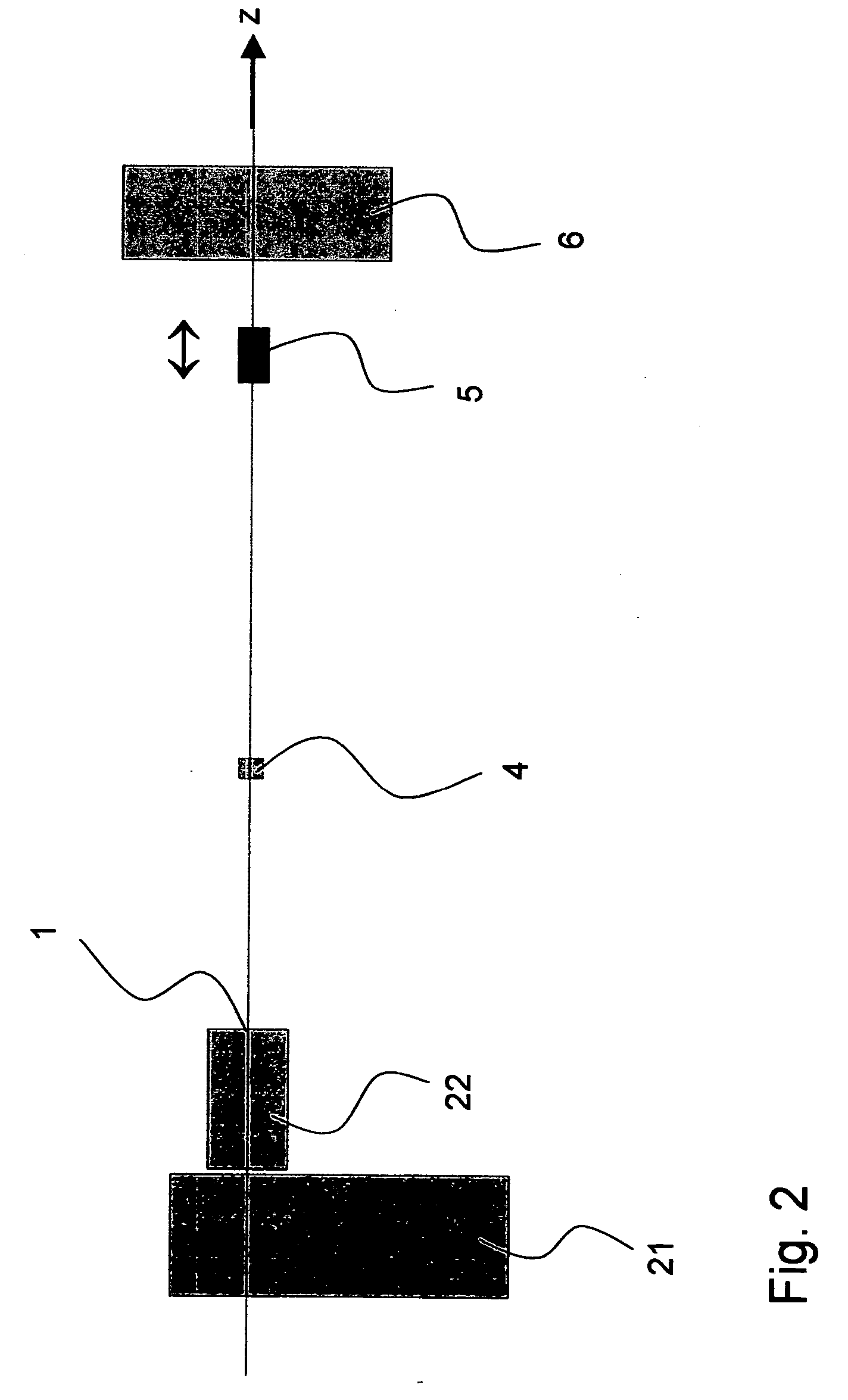Method for operating a primary beam stop
a beam stop and beam technology, applied in the direction of material analysis using wave/particle radiation, using wave/particle radiation means, instruments, etc., can solve the problem of inability to correct the varying properties of the beam optics, and achieve good radiation absorption and increase the measurement speed
- Summary
- Abstract
- Description
- Claims
- Application Information
AI Technical Summary
Benefits of technology
Problems solved by technology
Method used
Image
Examples
Embodiment Construction
[0030]FIG. 1 shows the beam path of one embodiment of the inventive method for operating an X-ray or neutron-optical system. A source 1, which is shown highly schematically, emits radiation (X-ray or neutron radiation) along a z-axis. The emitted radiation is divergent (or convergent) i.e. its cross-section increases (or decreases) with increasing propagation in the positive z-direction. The radiation consists substantially of a conical primary beam 2 whose external edge region is surrounded by a conical surface of parasitic interfering radiation 3. The interfering radiation 3 can be produced e.g. through diffraction effects on collimators associated with the source 1. The source 1 denotes the device which generates the primary beam 2 impinging on the sample, i.e. a last mirror, a last diaphragm, or a last collimator behind an X-ray tube or a neutron emitter (which is often radioactive).
[0031] A sample 4 is disposed on the beam axis (z-axis) of the primary beam 2 and can be complet...
PUM
| Property | Measurement | Unit |
|---|---|---|
| angle | aaaaa | aaaaa |
| magnetic field | aaaaa | aaaaa |
| temperature | aaaaa | aaaaa |
Abstract
Description
Claims
Application Information
 Login to View More
Login to View More - R&D
- Intellectual Property
- Life Sciences
- Materials
- Tech Scout
- Unparalleled Data Quality
- Higher Quality Content
- 60% Fewer Hallucinations
Browse by: Latest US Patents, China's latest patents, Technical Efficacy Thesaurus, Application Domain, Technology Topic, Popular Technical Reports.
© 2025 PatSnap. All rights reserved.Legal|Privacy policy|Modern Slavery Act Transparency Statement|Sitemap|About US| Contact US: help@patsnap.com



